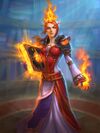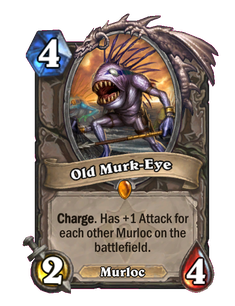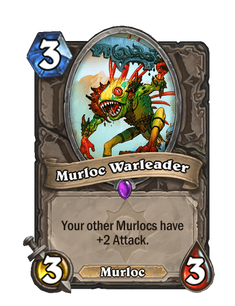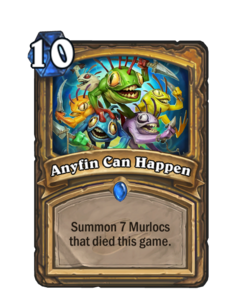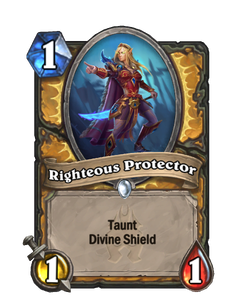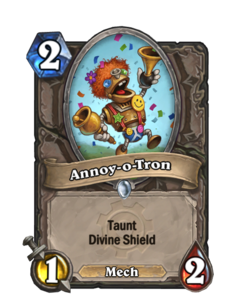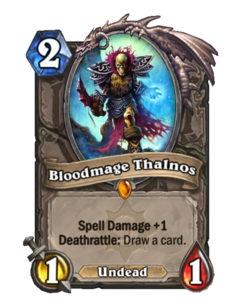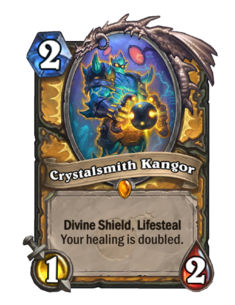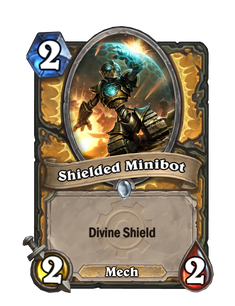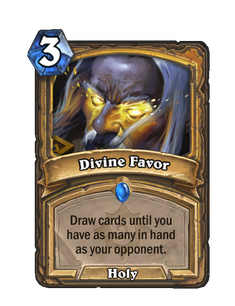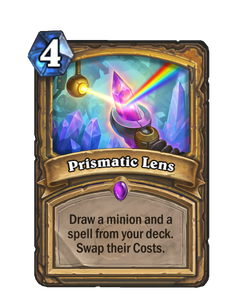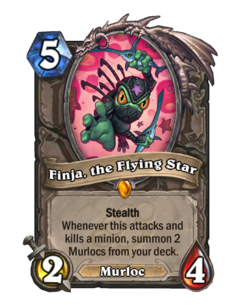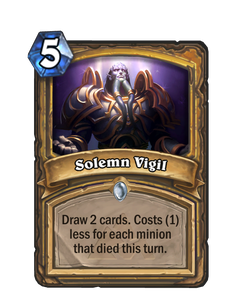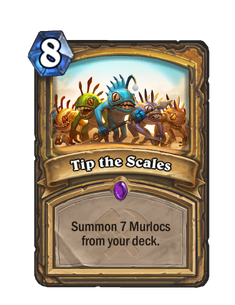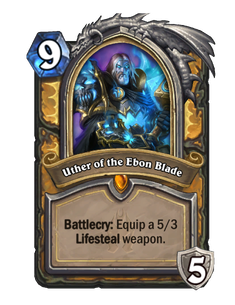Hearthstone Wiki:Archived/Anyfin Paladin
They may also contain information that changes at such a rapid pace that maintaining them is no longer practical.
| Wild format |
|---|
|
With the start of the Year of the Mammoth, |
Anyfin Paladin is a combo Paladin deck type.
Deck type[edit source]
Although a combo deck, Anyfin Paladin is still capable of unparalled amounts of aggression. With more aggressive builds of the deck, Anyfin Can Happen is much less relied upon. This is in part due to the weaknesses of the combo itself. Taunt minions and Armor can easily mean certain defeat if the opponent controls large amounts of either.
![]() Prismatic Lens and
Prismatic Lens and ![]() Tip the Scales allows Anyfin Can Happen to be played earlier, but omits
Tip the Scales allows Anyfin Can Happen to be played earlier, but omits ![]() Call to Arms resulting in less early aggression.
Call to Arms resulting in less early aggression.
More control-based variants of Anyfin Paladin also exist with cards like ![]() Uther of the Ebon Blade and
Uther of the Ebon Blade and ![]() Crystalsmith Kangor, but cards are still based on the premise of controlling the board and keeping down enemy health for the eventual combo much like more aggressive builds.
Crystalsmith Kangor, but cards are still based on the premise of controlling the board and keeping down enemy health for the eventual combo much like more aggressive builds.
History[edit source]
Anyfin Paladin was first conceived in The League of Explorers after the release of ![]() Anyfin Can Happen. Due to the limited amount of Murloc-supporting cards, early builds of Anyfin Paladin were extremely similar to and often synonomous with Murloc Paladin. The difference between the two decks were often miniscule until the release of
Anyfin Can Happen. Due to the limited amount of Murloc-supporting cards, early builds of Anyfin Paladin were extremely similar to and often synonomous with Murloc Paladin. The difference between the two decks were often miniscule until the release of ![]() Vilefin Inquisitor in Whispers of the Old Gods and
Vilefin Inquisitor in Whispers of the Old Gods and ![]() Rockpool Hunter and
Rockpool Hunter and ![]() Gentle Megasaur in Journey to Un'goro.
Gentle Megasaur in Journey to Un'goro.
The Year of the Mammoth rotations made Anyfin Paladin a wild deck, and it remained in Wild being relatively unpopular with relatively little improvements to the deck until The Boomsday Project. ![]() Prismatic Lens allowed a different playstyle that allowed Anyfin Can Happen to be played much earlier and allow for even more aggression. The strength and popularity of Anyfin Paladin peaked in Rastakhan's Rumble and Rise of Shadows where it was among the few dominating decks in the meta.
Prismatic Lens allowed a different playstyle that allowed Anyfin Can Happen to be played much earlier and allow for even more aggression. The strength and popularity of Anyfin Paladin peaked in Rastakhan's Rumble and Rise of Shadows where it was among the few dominating decks in the meta.
The prominance of SN1P-SN4P Warlock in part caused the decrease in the popularity of Anyfin Paladin by filling the same niche in the meta. Both decks were combo-oriented decks that allowed for early aggression and did not solely rely on their comboes to win.
Ashes of Outlands brought more support to Murloc Paladin in the form of ![]() Felfin Navigator,
Felfin Navigator, ![]() Underlight Angling Rod, and
Underlight Angling Rod, and ![]() Murgur Murgurgle, which further contributed to the unpopularity of Anyfin Paladin.
Murgur Murgurgle, which further contributed to the unpopularity of Anyfin Paladin.
Common cards[edit source]
The following cards are usually in the deck.
Core cards[edit source]
The following cards are played in most or all versions of the deck:
Optional cards[edit source]
The following cards are played more than occasionally, but not always:

